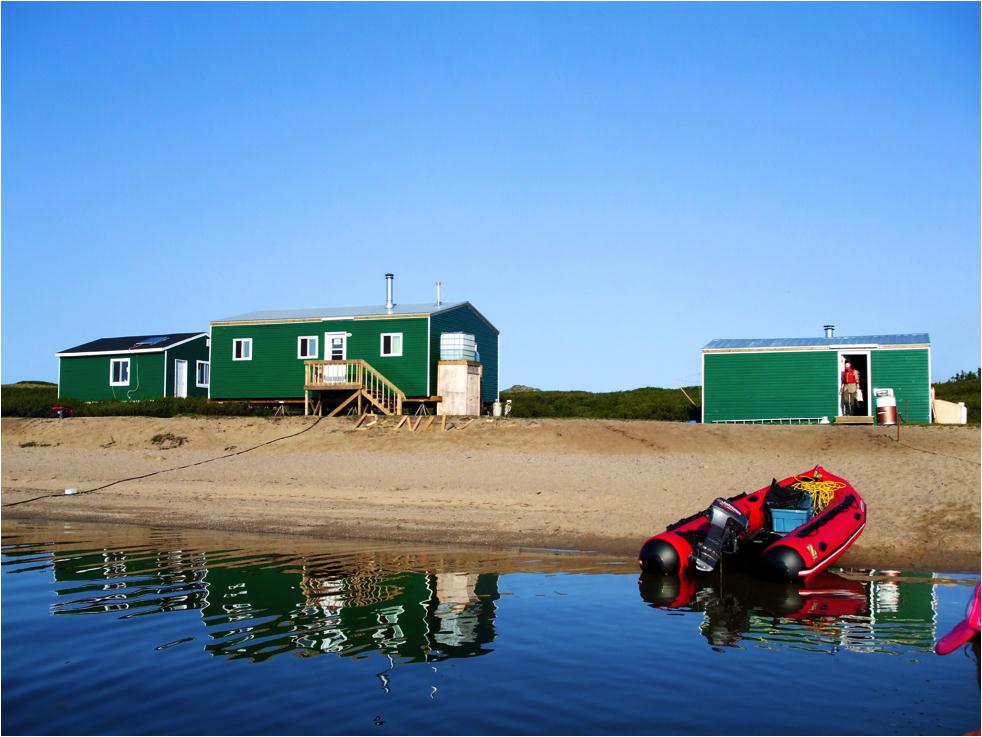CEN Boniface River Field Station

Address
Boniface River CampCentre d’études nordiques
C.P. 59
Kuujjuarapik-Whapmagoostui
Québec
Canada J0M 1G0
Station manager
Mickaél LemayStation Features
Opening year: 1988 Status: OpenFacilities
Station name and owner
The CEN Boniface River Field Station is owned and run by the Centre d'études Nordiques (CEN: Centre for Northern Studies) whose secretariat is based at Université Laval, Québec, Canada. This station is part of the CEN Network.
Location
The CEN Boniface River Field Station is situated within the forest tundra less than 10 km from the tree limit and some 50 km inland from Hudson Bay (57°45'N, 76°10'W).
Climate data
Grey colours are WMO Climate Normals including maximum and minimum values. Blue colours are individual years.
Climate data for the stations where extracted via Copernicus Climate Data Store, from the global gridded reanalysis product:
ERA5 monthly averaged data on single levels from 1940 to present.
Description and source code: Roemer J.K. 2023. https://doi.org/10.5281/zenodo.10214922
Data Source: Hersbach et al. 2023. Copernicus Climate Change Service (C3S) Climate Data Store (CDS), https://doi.org/10.24381/cds.f17050d7
Biodiversity and natural environment
The landscape around the station is composed of both wooded hills (30 %) and hills dominated by tundra vegetation (70 %). The most protected sites are generally forested except for areas that have been affected by fire and consequently induced an opening in the forest cover. Landscape features of scientific interest are discontinuous permafrost, thermokarst ponds, palsas, the Boniface River, and the treeline.
History and facilities
The CEN Boniface River Field Station was constructed in 1990 by Professor Serge Payette to conduct research on past treeline and tree growth dynamics in the context of Climate Change. It was upgraded in 2010. Presently, the station is comprised of three individual buildings (one with a shower) that serve primarily as laboratories and a kitchen building. These are powered by solar energy and heated with an oil furnace. Onsite there are two zodiac-style boats. Access to the different research sites is primarily by helicopter or by the Boniface River, which is navigable for some 20 km. Dormitory tents and sleeping bags for researchers and students can be provided by the CEN. Typically, between five and twenty people can be found at the research station during the summer season.
General research and databases
Meteorological stations installed within the proximity of the research station have been recording the prevailing conditions at the tree limit, including the thermal contrast (air and soil) between tundra and forest environments, since 1988. In addition, tree growth has been measured with the aid of a dozen electronic dendrometers since the summer of 2005. Data available through Nordicana D: www.cen.ulaval.ca/nordicanad/. Topics which are studied at the station include the following, but are not exclusive to these: Vegetation dynamics of a subarctic topo-sequence and the interaction between climate and forest fires, genetic homogeneity in the ecological heterogeneity of Québec subarctic forests in relation to climatic change, black spruce growth as an indicator of Climate Change at the treeline in northern Quebec, origin and dynamics of wooded palsas in the Boniface River region, dwarf birch (Betula glandulosa) densification since 1950, the influence of permafrost on riverine ecosystem dynamics, fire history of the Boniface River region, long black spruce tree-ring chronology, riparian ecosystem dynamics, Holocene evolution of a palsa plateau at the tree limit, and structural dynamics of an ancient spruce lichen woodland at the northern forest limit.
Station Monitoring
Human dimension
No communities live at or near Boniface River Field Station. The nearest community is Inukjuak more than 140 km away and on the shores of eastern Hudson Bay.
Access
Beginning in the summer of 2001, supplies for the research station have been delivered primarily by fixed winged aircraft, i.e. Twin Otter, thanks to the construction of a 300 m long airstrip situated on the opposite shore of the research station. Access to the station is by chartered helicopter or Twin Otter, departing from Whapmagoostui-Kuujjuarapik. Contact CEN (cen@cen.ulaval.ca) for more information.

